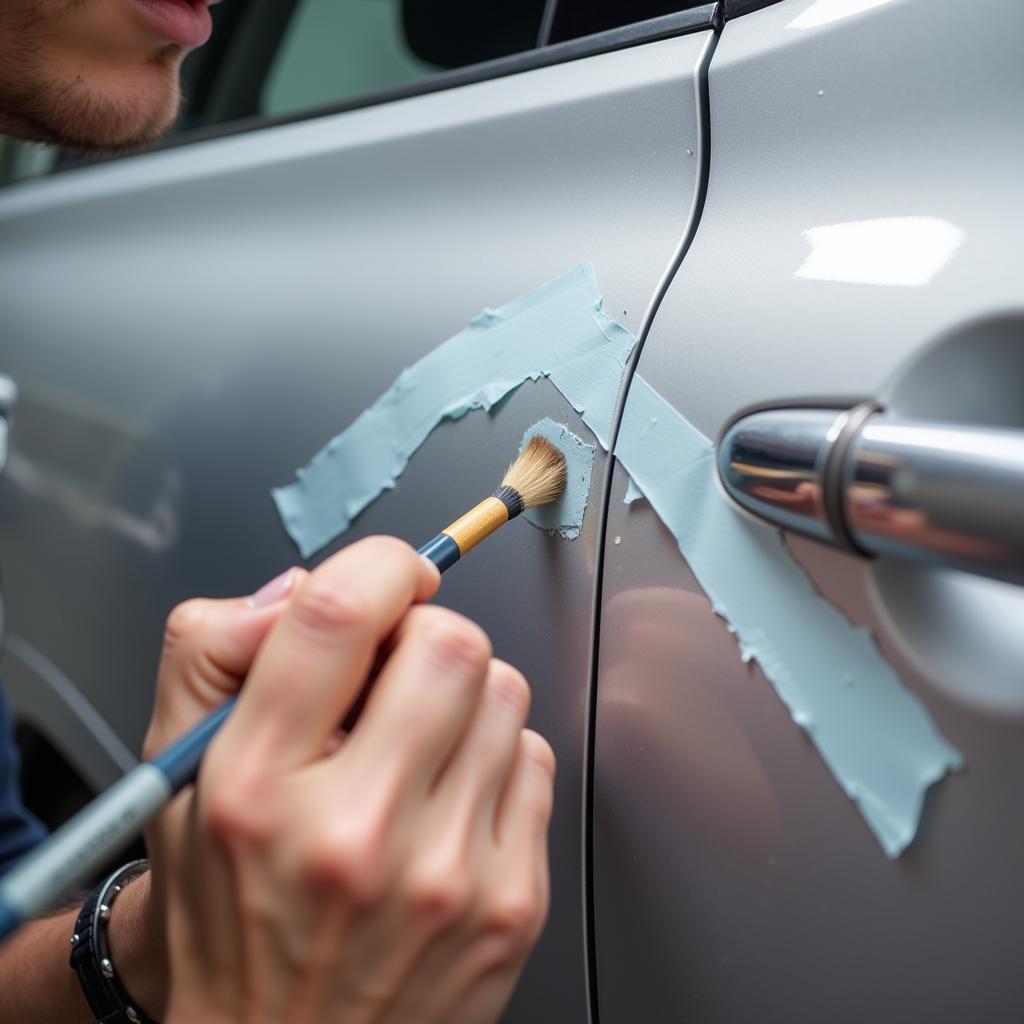Rust is a car owner’s worst nightmare. It not only looks bad, but it can also compromise the structural integrity of your vehicle. Knowing how to fix rust spots on a car body is essential for preserving its value and longevity. This guide will provide you with a step-by-step process to tackle those unsightly rust spots effectively.
Understanding Rust and its Causes
Before diving into the repair process, let’s understand what causes rust. Rust, or iron oxide, forms when iron is exposed to oxygen and moisture. This chemical reaction creates the reddish-brown flakes we see on our car bodies. Road salt, acidic rain, and even bird droppings can accelerate this process. Coastal areas with high humidity are particularly prone to rust formation.
Assessing the Damage: Surface Rust vs. Deep Rust
The first step in fixing rust is determining its severity. Surface rust affects only the top layer of paint and is relatively easy to fix. Deep rust, however, has penetrated the metal and requires more extensive repair. If you see bubbling paint, flaking metal, or holes, you’re dealing with deep rust.
How to Fix Surface Rust on Your Car
Fixing surface rust is a DIY project you can tackle with some basic tools and materials.
- Clean the area: Wash the rusted area with soap and water, then dry it thoroughly.
- Sand the rust: Use sandpaper (start with a coarser grit like 180 and gradually move to a finer grit like 320) to remove the rust. Sand until you reach bare metal.
- Apply primer: Apply a rust-inhibiting primer to the bare metal. This will prevent future rust formation.
- Apply paint: Once the primer is dry, apply touch-up paint that matches your car’s color.
- Apply clear coat (optional): For added protection and shine, apply a clear coat.
Tackling Deep Rust: A More Involved Approach
Deep rust requires professional intervention or advanced DIY skills.
- Cut out the rusted metal: Use a cutting wheel or metal shears to remove the rusted section completely.
- Weld in a patch panel: Weld a new piece of metal to replace the removed section.
- Grind down the welds: Smooth out the welds with a grinder.
- Apply body filler: Apply body filler to create a smooth surface.
- Sand the filler: Sand the body filler until it’s level with the surrounding area.
- Apply primer and paint: Follow the same painting process as with surface rust repair.
Preventing Rust: Proactive Measures
Preventing rust is easier than fixing it.
- Wash your car regularly: This removes road salt and other corrosive substances.
- Wax your car: Wax provides a protective layer against the elements.
- Keep your car garaged: A garage protects your car from the elements.
- Touch up paint chips immediately: Exposed metal is susceptible to rust.
“Regular washing and waxing are your first line of defense against rust,” says John Miller, Automotive Engineer at AutoFix Solutions. “Catching rust early is key to minimizing repair costs.”
How Can You Tell if the Rust is Surface Rust or Deep Rust?
Identifying the type of rust is crucial. Surface rust looks like discoloration and can be easily scraped off. Deep rust, on the other hand, involves pitting and bubbling of the paint, indicating metal damage.
“Addressing rust promptly, whether surface or deep, is vital for preventing further damage,” advises Sarah Chen, Corrosion Specialist at MetalGuard Technologies. “Don’t underestimate the impact of even a small rust spot.”
Conclusion
Knowing how to fix rust spots on a car body can save you money and extend your car’s lifespan. Whether it’s simple surface rust or more serious deep rust, addressing the issue promptly is essential. Remember, regular maintenance and preventative measures are your best allies in the fight against rust. For any further assistance or expert advice, connect with us at AutoTipPro. Call us at +1 (641) 206-8880 or visit our office at 500 N St Mary’s St, San Antonio, TX 78205, United States. We’re here to help keep your car in top condition.





Leave a Reply